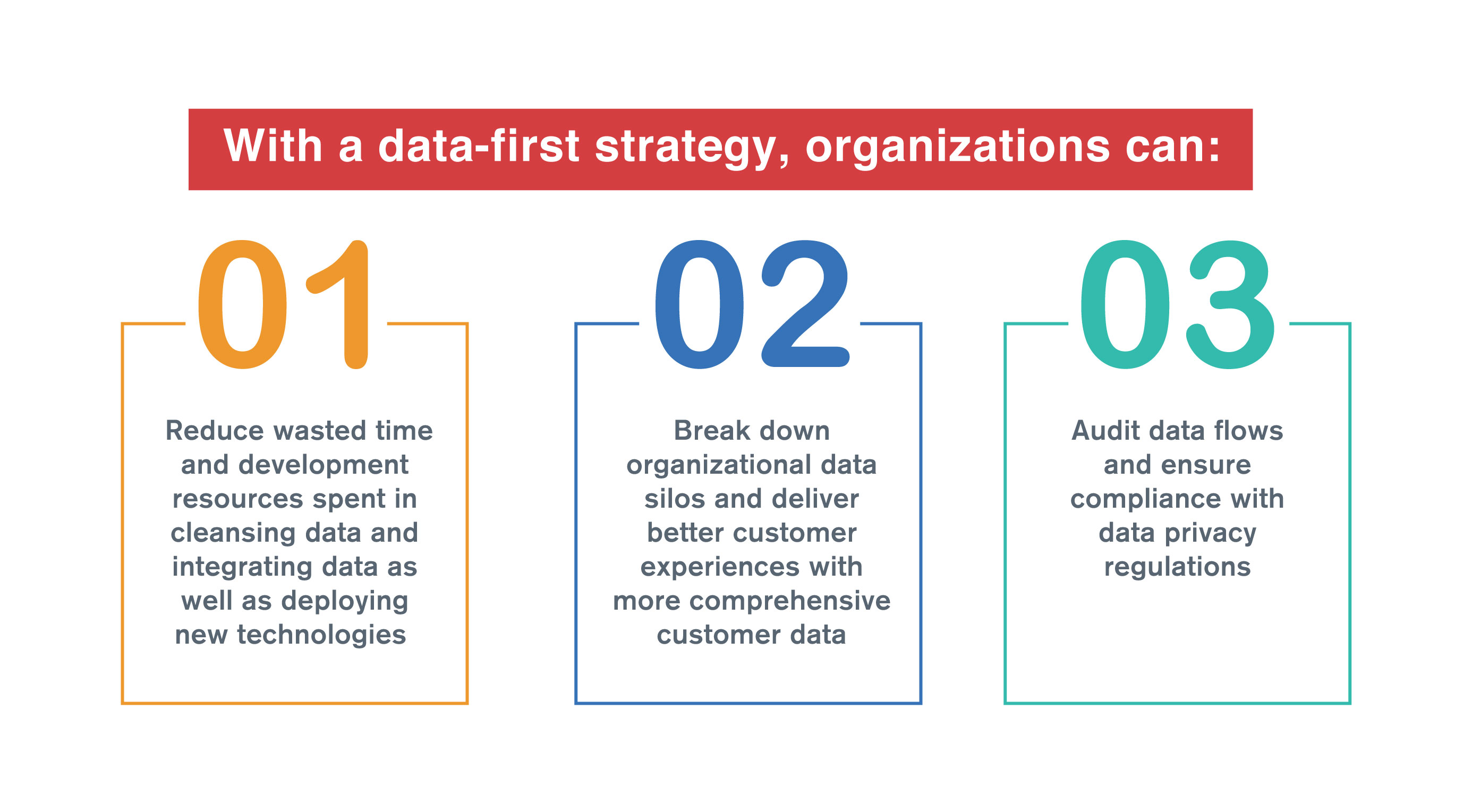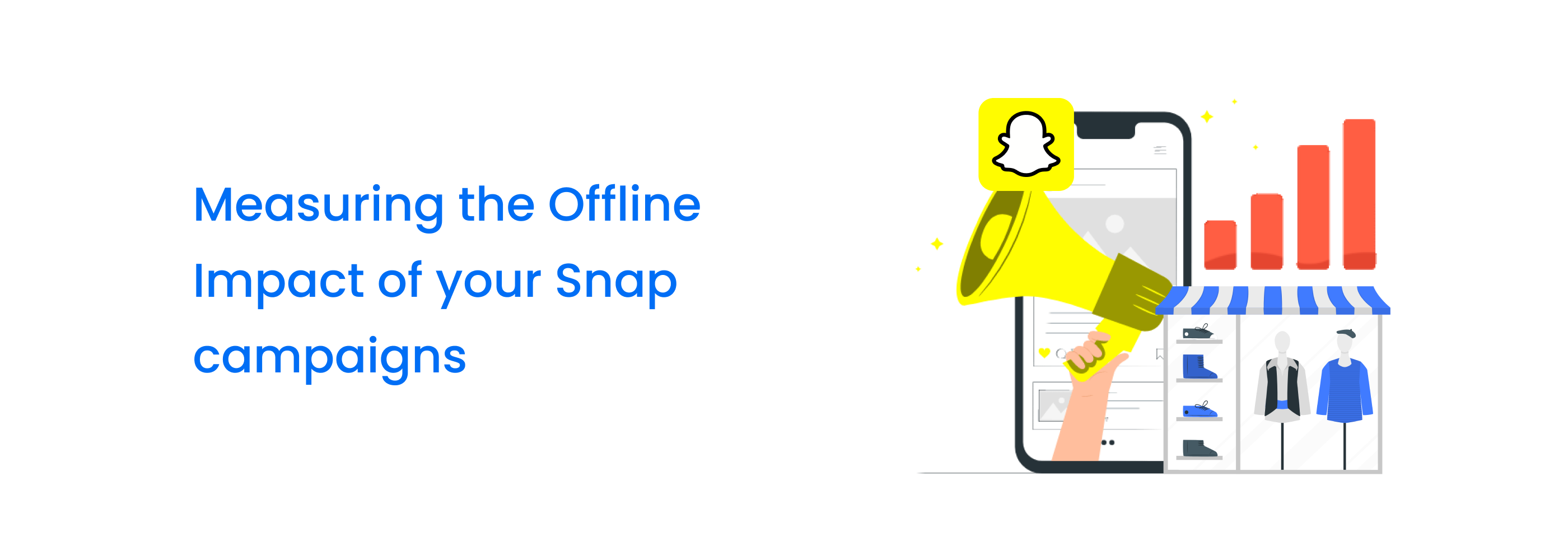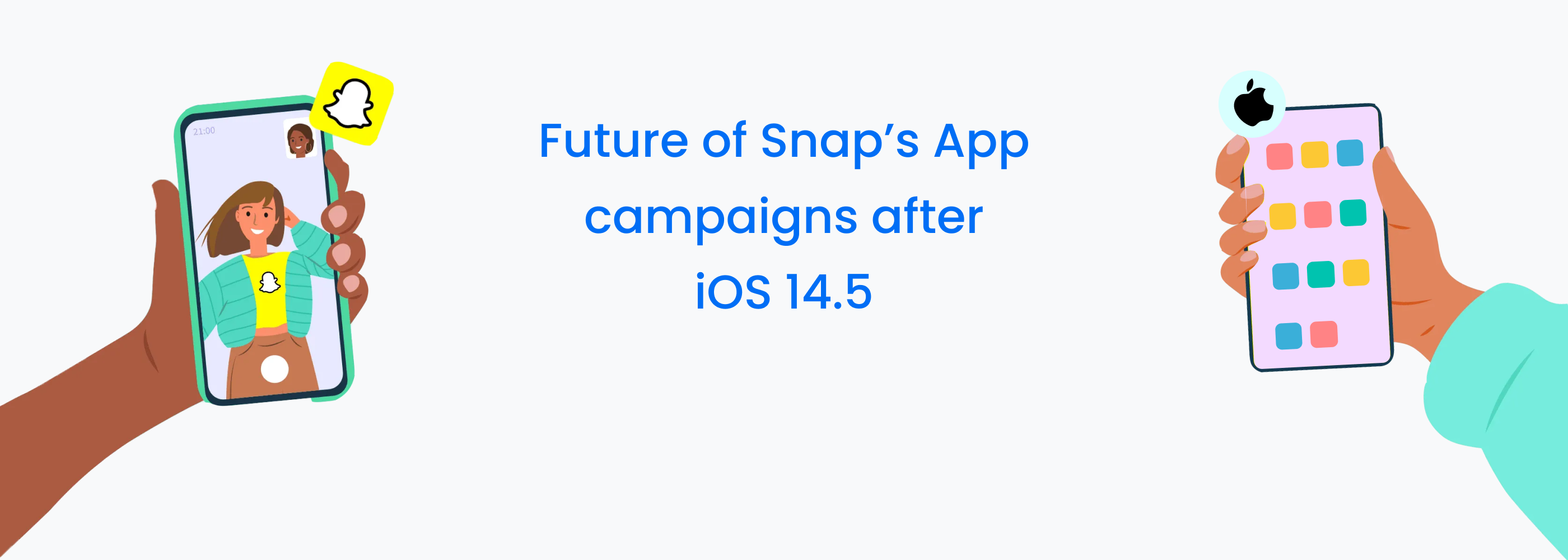Why Marketers Must Shift to an Active First-Party Strategy Approach
Switching your marketing and CX strategy to a first-party data strategy isn’t swapping out one set of data for another. It’s complementing this existing approach with richer and more strategically-aligned data that maps to your organization’s revenue goals. Building a first-party data strategy (which we’ll cover next) requires a robust yet adaptable customer data supply chain to move from collection to unification to activation. Turning to a first-party data strategy unlocks a host of use cases that can help you unlock long-promised business goals like digital transformation.
Let’s take a look at what first-party data can enable your company to do when you pair the right technology with the right people and strategy. We’ll only cover a few new capabilities, including scalable customer acquisition, a single view of the customer, improving time to insight, and governing data according to customer consent. Depending on your industry and CX/Marketing needs, your first-party data strategy may focus on other goals.
Collecting first-party data is the first step— an email, a social media handle— but getting them to become customers is another hurdle. As consumers bounce between touchpoints, companies need to be able to react across channels in real-time. By integrating all of your data sources into a vendor-neutral customer data supply chain, you’re better able to analyse and engage individual users’ actions. Down the line, this provides an opportunity for personalized marketing that turns consumers into customers. One of the ways you can do this is through lookalike marketing.
You know what your high-value customers look like and how they act. Turning that first-party data (purchase and behaviour data) into targeted campaigns to convert other like individuals into high-value customers (whether that data comes from a first or third party) is now possible. By using first-party data to craft highly targeted ads to directly target consumers that are displaying intent and affinity to become high-value customers, you not only generate higher lifetime values but save money by reducing unnecessary ad spend.
Govern Data Use According to Customer Consent

One of the inherent challenges of third-party data is managing the complexity of consent and various overlapping regulations. The same goes for first-party data, though you’ve cut out the middle-man (which is very helpful). When consent is captured on your website (via those ever-present banners), the opt-ins and opt-outs must be tied to a profile and acted upon. Because there are a variety of things to opt-in or optout of, managing what data needs to be shutdown and what data can continue to be collected gets tricky.

Get An Early Buy-In
Developing a first-party data strategy goes beyond marketing to impact many customer-facing departments. Identify the key stakeholders early on to get their buy-in on any new strategies or technologies, and to determine what data will be collected. Form a multi-departmental team to oversee the strategy long-term.
Standardize, Standardize, Standardize
Your first-party data is your own company’s asset. As such, your company should determine the standard naming conventions used during collection to ensure consistency and clarity.
Review Regularly
Put in place a process to validate data to ensure it is consistent, accurate, and usable. Consult your key-stakeholder team to ensure that the evolution of your tech stack is being integrated into your first-party data strategy. Don’t leave new data sources out.
Activate Conscientiously
Once your data is consistent, activate it across your different channels. But do so in a way that respects the wishes of your customers in how you use their data.
















